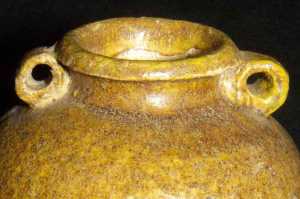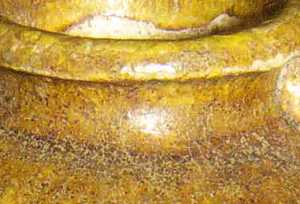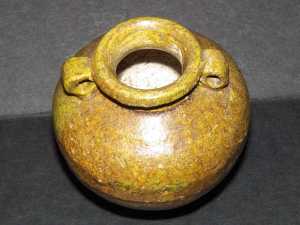The Chinese and Asian Art Forum. For Fans, Collectors and Dealers.
 Basic Rules For the BidAmount Asian Art Forum: Talk about whatever you want. You can even discuss and offer things that are for sale if they are authentic. Maximum image file size per post is 2 MB. Images of 700pxl x 700pxl are optimal if saved at a medium resolution. Be respectful of others and enjoy yourself. Click the YouTube link for a brief tutorial on using the forum. You can also EMBED Videos by cutting and pasting from You-Tube, Vimeo etc.
Basic Rules For the BidAmount Asian Art Forum: Talk about whatever you want. You can even discuss and offer things that are for sale if they are authentic. Maximum image file size per post is 2 MB. Images of 700pxl x 700pxl are optimal if saved at a medium resolution. Be respectful of others and enjoy yourself. Click the YouTube link for a brief tutorial on using the forum. You can also EMBED Videos by cutting and pasting from You-Tube, Vimeo etc.
NOTE: To post an item or add a new post, click open the category title from the FORUM LIST, and CLICK the Blue ADD TOPIC button.
Very nice! It looks Tang to me. Compare the shape to the Sui/Tang* piece here: https://jianding.shoucangjianbao.com/taoci/suitangheiyoushuang-34188.html
Not quite the same, but close.
*Note also in the Chinese explanation it suggests this is "Late Tang Dynasty style", so I'm not sure why they'd mention Sui dynasty.
Are you able to show some pictures in natural sunlight? If so it would be good to see those.
Was this one of the buried ones? The glaze looks interesting, is it really that ochre color?
I think that form of lug or loop handle appears around the start of the Yuan Dynasty, maybe late Song, I think prior to that the lugs were formed from flat pieces or clay and looped over. It may be the photos but I don't see any indication of a while slip under the glaze, so I assuming it is higher fired porcelain rather than a stoneware also, could you confirm that it is just glaze directly body?
Beautiful jarlet regardless of the age, it is a very nice amber/ochre glaze.
Cheers,
Jeremy
Notice the base especially there the glaze ran over the foot on one side, very simple string cut. I see no indication of slip. Soft - proto-porcelain - light weight.
<Sharon> The color it correct. This is not one of the ones from the dig. But I did buy it in downtown Manila at Ballesteros.
I have been told Tang by some, Song by some and Yuan or Ming. That ocher glaze is common in many pieces and shapes. Some are also spotted ocher.
David Coles
I agree with your comments. But it's not stoneware. I wonder what is the Tang body color and what foot cut. As to the buried ones - ALL the Philippine pieces WERE BURIED.
The stores in Manila etc are just buying from the local people who sell their dug up pieces to a middle man (where I bought) and the middle man sells to dealers in cities.
The first pieces found were found in Santa Ana (near Clark Air Base) in the 1920s during building etc. But some large objects were kept for centuries in s families (The large dragon pots) - See "Oriental Ceramics Discovered in the Philippines." by Locsin. I'm going over the Locsin book and will post some similar Tang types.
David Coles
@musicnus
Hey David,
I actually have been trying to find some examples of jarlets in this glaze so I could compare the foot. I will say that typically earlier (tang dynasty especially) ochre/ amber glazed wares required a white slip to adhere, so the fact that this is lacking it makes me think at least Song Dynasty, definitely closer to porcelain. I will say the way the mouth rim is trimmed slightly angled away and downwards very much makes me think late Song and into early Yuan. And as I said before the tube shaped lugs. I have seen string cut bases on many eras of pots and jarlets, so I really wouldn't know how that corresponds to the dating.
Here are a few examples, sorry no really foot comparison except the Bonhams one, which I must say is kind of what I have always expected in Tang feet, from the three I have seen in person outside of a Museum case. Far from an expert here but just my thoughts.
Cheers,
Jeremy
https://www.bonhams.com/auctions/23984/lot/2134/
https://www.chinese-porcelain-art.com/item/R35/pottery-jar-tang-dynasty-618-906/
https://www.roots.gov.sg/Collection-Landing/listing/1004888
Not the same glaze but the mouth shape and lugs are similar.
https://www.roots.gov.sg/Collection-Landing/listing/1082277
Thanks again for good input and research! I did notice that the three seem to have a stoneware body. Mine is not stoneware. I do see the slip required for the stoneware. Your #2 is very finely done - unlike mine which looks like rope-built as we can see with the waves on the side.
I found my Locsin book "Oriental Ceramics Discovered in the Philippines" 1967 out of print. Here are a couple of photos. The first one looks like an exact copy of mine. Look at how the foot is very light. The other brown glaze example has the same shape w/o rings and foot even to the drip! Foot shot is from #2 with is plate #17. Both glazes are lead glazes.
David Coles
Great discussion, all.
David, does Loscin's book give a dating for #22?
The authors agree that Tang wares may well have been in south China, "more discreet to assign a later date and assume that the manufacture of lead-glazed wares of Tang type continued in to the Sung period in some kilns in south China and possibly into the Yuan Dynasty." "...The unquestionable and probable Sung-period ceramics found together with lead-glazed wares in the Santa Ana burials." (Santa Ana was the first areas where pieces were found in the 1920s.) The author doesn't seem to know for sure. He thinks the south China kilns "would have run through the 11th century" two centuries after the end of the Tang period (906BC) and into " the 11th century or Northern Sung period and possibly into the Southern Sung dynasty." These comments are in a section concerning Lead-glazed ware right after the #22 picture and other pictures of a similar glaze, but there is no specific information on #22. As you can see there is a wide range of dates
Finally: "...the general characteristics of the glaze suggest a possible Tang dynasty date for these wares, although we prefer a Sung-Yuan dating." He says because these wares are mixed in with Sung and Yuan dating.
David Coles
Thanks for following up, David. That's all great information. I've ordered that book, by the way, so thanks too for mentioning it.
To be honest I'd actually started doubting my Tang guess based on Jeremy's points about the shape of the lugs and the angled cut of the mouth. I think he's correct about both.
For what it's worth, the color of the paste, the glaze color, and the flat foot were the things that made me consider Tang in the first place.
Craig and Jeremy,
I understand the comments of the shape of the lugs and the angled cut of the mouth. However, that comment is referring to stoneware, isn't it? I've always thought it was more Sung because of the body of the jar. Different body changes everything from stone ware - to a proto porcelain. BWT, the book picture of the jarlet just like mine says it does have a slip. Perhaps I'm missing the slip on mine. When you are dipping a glaze, which is not a thick glaze - They might use the slip in a different way. I noticed that my piece seems to be whitish down to the foot. Maybe I'm missing something or it is going to the end of the slip. Here is the closeup of the book jar closeup.
David Coles
Thanks for visiting "The BidAmount Asian Art Forum | Chinese Art"
If you sell on eBay, or have a shop feel free to post images and descriptions and links.
Check back often for discussion about the latest news in the Chinese art and antique world. Also find out about the latest Asian art auctions at Sotheby's, Christie's, Bonhams and Tajans.
Auction results for: fine porcelain, ceramics, bronze, jade, textiles and scholar's objects. As well as Japanese, Thai, Vietnamese and other Asian cultures.
Thank you,
Peter Combs
Topics and categories on The BidAmount Asian Art Forum | Chinese Art
Kangxi vases, Kangxi dishes and chargers, Kangxi ritual pieces, Kangxi scholar's objects, Qianlong famille rose, Qianlong enamels, Qianlong period paintings, Qianlong Emporer's court, Fine porcelain of the Yongzheng period. Chinese imperial art, Ming porcelain including Jiajing, Wanli, Xuande, Chenghua as well as Ming jades and bronzes.
The BidAmount Asian Art Forum | Chinese Art
A free Asian art discussion board and Asian art message board for dealers and collectors of art and antiques from China, Japan, Korea, Thailand, Cambodia, Vietnam and the rest of Asia. Linked to all of the BidAmount Asian art reference areas, with videos from plcombs Asian Art and Bidamount on YouTube. Sign up also for the weekly BidAmount newsletter and catalogs of active eBay listing of Chinese porcelain, bronze, jades, robes, and paintings.
The art of calligraphy - and for the ancient Chinese it certainly was an art - aimed to demonstrate superior control and skill using brush and ink. Calligraphy established itself as one of the major Chinese art forms during the Han dynasty (206 BCE - 220 CE), and for two millennia after, all educated men were expected to be proficient at it.
The Museum’s collections of Asian art span nearly five millennia and encompass the cultures of China, the Himalayas, India, Japan, Korea, and Southeast Asia. In 2007, the Museum launched an initiative to create dedicated galleries for the collection, beginning with a gallery for the arts of Korea ...
Chinese art is full of symbolism, in that artists typically seek to depict some aspect of a totality of which they are intuitively aware.
China Online Museum is the finest online museum of Chinese art. It features Chinese calligraphy, painting, ceramics, bronzes, carving, and other artworks.
Chinese Ceramics & Works of Art. Overview Upcoming auctions Contacts Auction results ... Christie’s sales of Chinese ceramics and works of art showcase centuries of Chinese history. Held throughout the year in London, New York, Paris and Hong Kong, they attract a wide audience of collectors and connoisseurs vying for pieces as diverse as ...
Explore Asian Art Week. Contact the Specialist Department. Chinese Paintings ... Senior Specialist, Head of Sale. [email protected]. Tel:+1 212 641 5760. Bid in-person or online for the upcoming auction:Fine Chinese Paintings on 10 September 2019 at New York. Bid in-person or online for the upcoming auction:Fine Chinese Paintings on 10 ...
Discover an abundance of must-see art from all corners of a vast continent at Christie’s NY Asian Art Week. From contemporary classical and Chinese paintings to works with exemplary provenance from the Art Institute of Chicago, our Rockefeller Paza galleries will be full of ancient treasures and contemporary masterworks in a salute to the vibrant arts of Asia.
Sold to benefit The Art Institute of Chicago’s Asian Art Acquisition Fund, the sale features 84 lots with a focus on Ming and Qing porcelains, and offers a rare insight into the taste for collecting Chinese ceramics and works of art in the Midwest from the end of the 19th century through the 1980s. Highlights include two Wanli wucai garlic-head vases, a Qianlong mark and period, blue and ...
Specialist, Chinese Paintings, Christie's London Dr Malcolm McNeill is a Specialist in Chinese Paintings at Christie’s, based in London. He previously worked as an assistant curator of the Chinese collections and the Victoria and Albert Museum in London, as a researcher at the British Museum, and as a translator and tour guide at the National Palace Museum in Taipei.
The Christie's Education 2020 Conference: The Chinese Art Market 18 Jun 2019 Christie’s Education is delighted to announce our first international academic conference in Asia which will take place in Hong Kong from 26-27 November 2020 at the Hong Kong Convention and Exhibition Centre and will run in parallel with Christie’s Hong Kong Autumn Auctions.
The summer Chinese Art sale in Hong Kong will feature works of art from several private collections, including Qing porcelains and textile from the collection of the legendary Chinese art dealer A. W. Bahr (1877–1959), fine gilt bronze Buddhist sculptures from an old Hong Kong collection, an East Asian collection of Qing dynasty wine cups and jades, and a Japanese collection of Song ceramics ...
Sotheby's Chinese Works of Art Department holds two auctions each year in London, New York, Hong Kong and Paris.
Chinese Art - View Auction details, bid, buy and collect the various artworks at Sothebys Art Auction House.
With more than 340 Chinese works of art dating from the Neolithic to the Republic periods, highlights of this sale include a selection of Qing Imperial monochromes from the collection of Arnold and Blema Steinberg, early ceramics from the Art Institute of Chicago and Chinese porcelain and works of art from the collection of Henry Arnhold.
Results: Sotheby's Asia Week achieved $52.4 million in six strong auctions, exceeding pre-sale estimates. With 76.5% of lots sold and 60.3% of lots surpassing high estimates, the Asian art sales at Sotheby's indicate continued collector interest in the finest works of art from China, India and and the Himalayas.
Today's sale of Important Chinese Art will proceed as planned with sessions at 10 AM and 2 PM EDT. Sotheby's will be monitoring the weather conditions throughout the day and will be available to coordinate alternative bidding options should conditions make it difficult for clients to attend the auction in person.
Bonhams Chinese Art department is renowned for offering the finest works of art representing the richness and breadth of China's artistic heritage, particularly Imperial porcelain, white and spinach green jades, cloisonné and Buddhist art. Specialised international auctions are held globally, including London, Hong Kong and San Francisco.
Bonhams : Chinese Works of Art We use cookies to remember choices you make on functionality and personal features to enhance your experience to our site. By continuing to use our site you consent to the use of cookies. Please refer to our privacy and cookie policies for more information.
Bonhams Fine Art Auctioneers & Valuers: auctioneers of art, pictures, collectables and motor cars. We use cookies to remember choices you make on functionality and personal features to enhance your experience to our site. By continuing to use our site you consent to the use of cookies. ... Chinese Art (US) General enquiries
Bonhams : Fine Chinese Art We use cookies to remember choices you make on functionality and personal features to enhance your experience to our site. By continuing to use our site you consent to the use of cookies. Please refer to our privacy and cookie policies for more information.
Bonhams Fine Art Auctioneers & Valuers: auctioneers of art, pictures, collectables and motor cars Bonhams : Asian Art We use cookies to remember choices you make on functionality and personal features to enhance your experience to our site.
Bonhams are international auctioneers of fine Chinese and Japanese art. We specialise in rare Imperial and Export Chinese ceramics and works of art, as well as Japanese ceramics, fine and decorative works of art from the Neolithic Period to the 20th century. View on map
Bonhams Fine Art Auctioneers & Valuers: auctioneers of art, pictures, collectables and motor cars. We use cookies to remember choices you make on functionality and personal features to enhance your experience to our site. By continuing to use our site you consent to the use of cookies. ... Asian Art Bonhams. Work. 22 Queen St.




